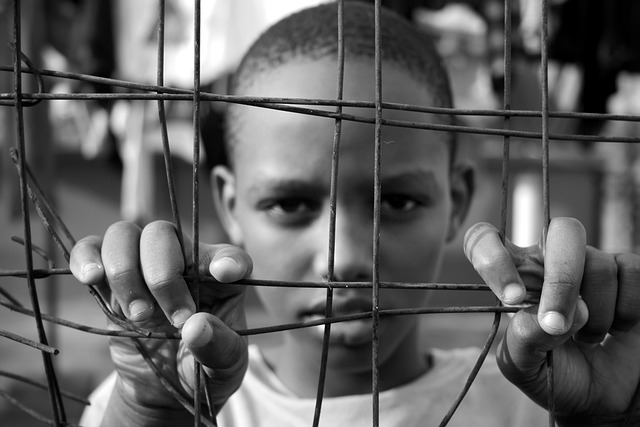Youth DUI Prevention Programs globally vary due to differing cultural norms, with Western countries focusing on severe penalties and public awareness, while Asian and African nations prioritize community involvement and education. These programs, combining education, enforcement, and intervention, significantly reduce drunk driving among young people worldwide. Cultural sensitivity is crucial; one-size-fits-all approaches may not succeed. Technological innovations and community engagement enhance program effectiveness, fostering responsible driving behaviors and safer roads for everyone.
“The global landscape of impaired driving, particularly involving youth, presents diverse challenges and cultural nuances. This article explores these intricacies through a comprehensive lens, analyzing international perspectives on ‘Youth DUI Prevention Programs’. We delve into cultural variations, the worldwide impact of underage drinking and driving, and successful global initiatives. Additionally, we examine the obstacles in cross-cultural implementation, highlight technological advancements, and emphasize community engagement as vital strategies for combating this pressing issue.”
- Understanding Global Perspectives on Impaired Driving: A Cultural Analysis
- The Global Impact of Youth DUI: Statistics and Trends
- Success Stories: Effective Youth DUI Prevention Programs Worldwide
- Challenges in Implementing Prevention Strategies Across Cultures
- Technological Innovations in Combating Youth Impaired Driving
- Community Engagement and Education: Building a Collaborative Approach
Understanding Global Perspectives on Impaired Driving: A Cultural Analysis

Understanding Global Perspectives on Impaired Driving involves a cultural analysis that reveals varying attitudes and laws across different countries. In many Western nations, youth DUI prevention programs emphasize severe penalties and public awareness campaigns to deter underage drinking and driving. These initiatives often include educational workshops, parental involvement, and strict license suspensions for first-time offenders.
In contrast, some Asian and African countries take a more communal approach, focusing on community engagement and education rather than strict punishment. Cultural norms play a significant role; for instance, in communities with strong familial bonds, involving parents and elders in youth DUI prevention efforts can be more effective than legal repercussions alone. This diverse global perspective highlights the need for tailored strategies that consider cultural context to address impaired driving effectively.
The Global Impact of Youth DUI: Statistics and Trends

The global impact of Youth DUI (drunk driving under age 21) is a pressing issue with significant consequences. Statistics reveal alarming trends; according to the World Health Organization (WHO), road traffic injuries are the leading cause of death among individuals aged 15-29 globally, and drunk driving plays a substantial role in these fatalities. In many countries, youth DUI rates are even higher, highlighting the urgent need for effective prevention strategies.
Youth DUI Prevention Programs have emerged as vital tools to combat this problem. These programs often combine education, enforcement, and intervention to raise awareness about the dangers of drinking and driving. They target young people through school-based initiatives, community outreach, and social media campaigns, aiming to foster responsible decision-making and promote safe alternatives to underage alcohol consumption. Early indications suggest that such programs can significantly reduce youth DUI rates, contributing to global road safety efforts.
Success Stories: Effective Youth DUI Prevention Programs Worldwide

In the global fight against impaired driving, there are numerous success stories showcasing the effectiveness of Youth DUI Prevention Programs. These initiatives, tailored to educate and empower young individuals, have significantly reduced drunk and distracted driving incidents among adolescents and young adults. For instance, countries like Sweden and Australia have implemented robust educational campaigns targeting school-aged children, focusing on responsible drinking culture and the severe consequences of impaired driving. These programs often include interactive workshops, peer-led discussions, and community service projects, fostering a deeper understanding of personal responsibility and public safety.
The success of these Youth DUI Prevention Programs can be attributed to their comprehensive nature, early intervention, and cultural sensitivity. By engaging young people in meaningful dialogue about alcohol consumption and driving, these initiatives not only discourage risky behavior but also promote long-lasting positive attitudes. As demonstrated by various global examples, investing in youth education is a powerful strategy to curb impaired driving, ultimately leading to safer roads for everyone.
Challenges in Implementing Prevention Strategies Across Cultures

Implementing global youth DUI prevention programs presents unique challenges due to diverse cultural perspectives and societal norms. What works in one country might not be effective or even culturally sensitive in another. For instance, approaches that emphasize strict law enforcement may not resonate with communities that value community involvement and restorative justice practices. Cultural context plays a significant role in shaping attitudes towards alcohol consumption, driving behaviors, and the perceived severity of DUI offenses.
Understanding these cultural nuances is crucial for tailoring prevention strategies. This might involve collaborating with local organizations, incorporating traditional community leaders in awareness campaigns, or adapting educational materials to align with local customs and beliefs. A one-size-fits-all approach risks overlooking specific barriers and opportunities within each culture, potentially hindering the success of Youth DUI Prevention Programs globally.
Technological Innovations in Combating Youth Impaired Driving

Technological innovations play a pivotal role in combating youth impaired driving, offering novel solutions to an age-old problem. Mobile applications designed for driver safety have emerged as powerful tools, providing real-time data and resources to both educate young drivers and discourage risky behavior. These apps often incorporate features such as breathalyzer tests, designated driver options, and immediate reporting of unsafe situations, empowering users with knowledge and accountability.
Moreover, social media platforms are being leveraged for Youth DUI Prevention Programs, utilizing digital reach to spread awareness and share success stories. Online communities dedicated to road safety allow young individuals to connect, share experiences, and offer mutual support, fostering a sense of collective responsibility. These technological advancements not only supplement traditional educational initiatives but also create dynamic, interactive environments where youth can actively engage in their own safety and that of their peers.
Community Engagement and Education: Building a Collaborative Approach

Community engagement and education are vital components in addressing impaired driving, particularly among youth. By fostering collaboration between local organizations, schools, and law enforcement, we can create a comprehensive strategy to prevent Youth DUI (Driving Under the Influence) incidents. This collaborative approach allows for the sharing of resources, expertise, and insights tailored to the specific needs and challenges of each community.
Educational initiatives should be inclusive and interactive, targeting not just young drivers but also their families, peers, and communities at large. Engaging youth in awareness campaigns, workshops, and peer-to-peer education programs can help normalize responsible driving behaviors. By empowering them with knowledge about the dangers of impaired driving and promoting alternative transportation options, we can foster a culture of accountability and safety on our roads.
The global landscape of youth impaired driving (Youth DUI) presents unique challenges, reflecting diverse cultural perspectives. This article has explored these nuances through a comprehensive analysis of successful prevention programs, statistical trends, and technological advancements. By understanding the impact of cultural contexts, we can tailor effective strategies to address Youth DUI. Community engagement and education are key to fostering collaboration, ensuring that innovative solutions resonate across diverse communities worldwide.






